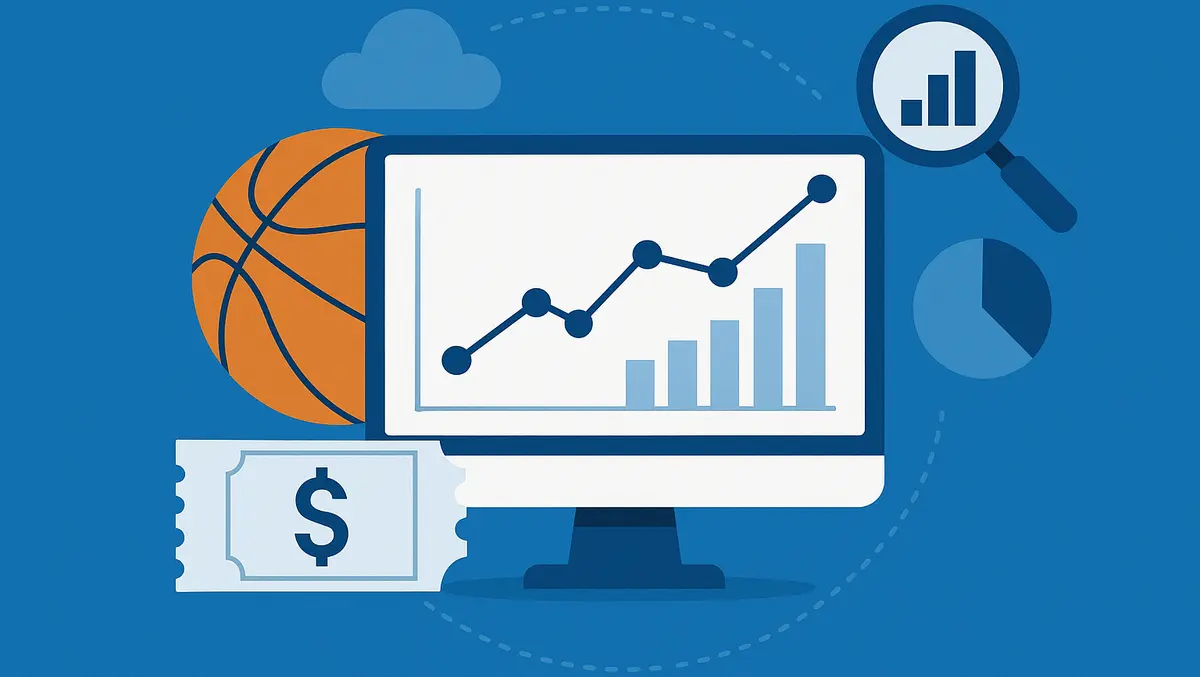
How the Orlando Magic are reinventing fandom with data and AI
Inside the AdventHealth Training Centre, the Orlando Magic Basketball team and their data analytics partner, SAS, pulled back the curtain on a years-long journey of using data to deepen connections with fans, optimise ticketing strategy, and reshape the business of sport.
What began over a decade ago as a search for smarter ticket pricing has grown into a comprehensive digital transformation strategy. "We originally met SAS back in 2009 at Disney's data analytics conference," said Jay Riola, Chief Strategy and Innovation Officer at the Orlando Magic. "At the time, secondary ticket markets were disrupting the way teams sold tickets, and we needed a solution to better understand game value."
That early encounter opened Riola's eyes to a broader vision. "SAS really helped us see the potential of data across the entire business," he added. "From ticketing, it grew into collecting as much data as possible, understanding fan preferences, predicting renewals and personalising experiences."
SAS is now the official analytics partner of the Magic, and according to SAS Chief Marketing Officer Jennifer Chase, it's the club's data-first mindset that sets it apart. "What impresses me most is how this team views data as an extension of itself," she said. "Their long-standing commitment to data puts them in an excellent position to do more with AI and platforms like SAS Viya."
The collaboration is yielding powerful results, particularly through the club's mobile app. "We're capturing thousands of data points - from how long fans spend on a page to what content they engage with," explained Ali Anderson, Senior Director of Business Strategy. "This is truly big data, and with SAS Viya, we're beginning to harness it in ways we couldn't before."
Magic's Director of Digital Marketing Lauren Lambis detailed how this data underpins an elaborate web of personalised communications. "We've built fan profiles with around 300 data points each," she said. "That lets us run campaigns like the 'Time Off' email, which reminds fans of the game they attended exactly a year ago - complete with highlights and a photo of the night."
Another example is the season-end "Seat Together Scorecard" campaign. "It shows fans stats like how many points were scored while they were in the arena and even what loyalty badges they earned," Lambis added. "It's fun, emotional and creates a strong recall of the in-arena experience."
That emotional resonance is something SAS sees as crucial. "Sport is inherently emotional," said Chase. "But this is a lesson for any business. Every company has 'fans' - whether you call them customers or clients. These stories about data use in sport are hugely transferable."
In fact, Chase believes the data-to-decisions journey on display in Orlando is helping SAS engage clients in other industries. "It's such a relatable narrative," she explained. "Even someone managing fraud at a bank can connect with the idea of using data to build trust and drive action."
Trust and balance, however, are essential. When asked how the team avoids creating overly engineered experiences, Riola pointed to the importance of natural interaction. "We're always trying to reduce friction," he said. "From how you get into the arena to where you park, to how we use your favourite player or memory to shape your experience - it should feel natural, not intrusive."
He also referenced one innovation born of fan data: the Magic Money programme. "One of the strongest predictors of renewals was whether a member used their tickets," Riola explained. "So we created a feature where unused tickets can be returned to the team and converted into digital currency. That currency can be used to upgrade seats, buy concessions, or merchandise - and it gives us more insight into fan behaviour."
Retention is where the numbers speak loudest. "We've more than doubled our single-game ticket revenue since adopting dynamic pricing strategies informed by analytics," said Riola. "We're also seeing stronger retention rates across both full and partial season ticket holders thanks to the flexibility we've built in."
Anderson added that product innovation is a major part of that. "It's not just full season vs. single-game tickets anymore. There's now a broad range of options tailored to different types of fans - all driven by data."
Internally, collaboration between departments is key to ensuring that insights are used responsibly. "We work closely with sales and service teams," Anderson noted. They don't say things like 'we saw you open this email 18 times'—that would be creepy. But that data still informs who they follow up with."
With 41 home games and thousands of fans to engage, real-time marketing is the next frontier. "We're starting to use real-time push notifications during games," Riola said. "They're triggered by analytics and designed to prompt the next action - maybe engaging a sales rep or upgrading a ticket."
Even cutting-edge game data is now being repurposed for the fan. "There's a system called Hawk-Eye that tracks player movement 11 times per second," he said. "While coaches use it for performance, we're exploring how to use it in fan activations."
Looking forward, Riola sees enormous potential in these untapped data streams. "Using game data to inform fan experiences - whether in the arena, on the app or at home - is a huge opportunity," he said. "And real-time analytics will only get more central to what we do."
Chase summarised the broader impact of the partnership. "This has been an intentional journey," she said. "And it shows how technology, used responsibly, can enhance not just business outcomes - but human experiences."
Or as Riola put it: "We want to use data in a way that feels organic and improves the experience. That's the goal."


